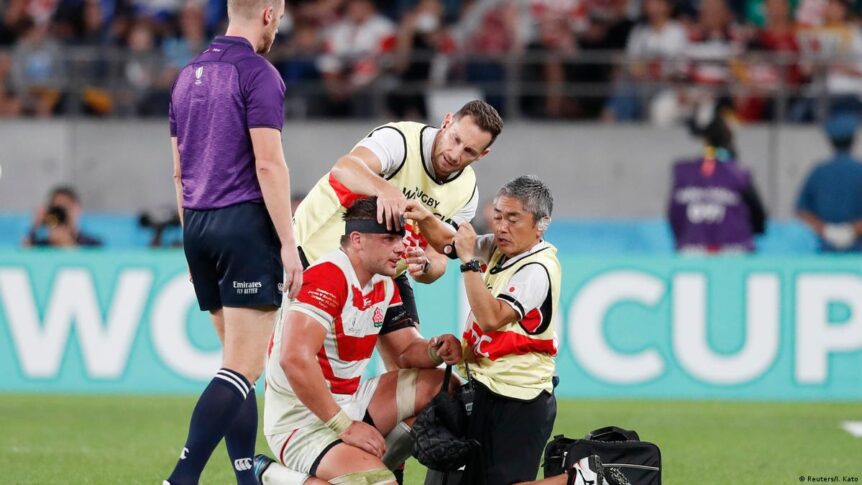Tonder, R. van, Starling, L., Surmon, S., Viviers, P., Kraak, W., Boer, P.-H., Jordaan, E., Hendricks, S., Stokes, K. A., Derman, W. & Brown, J. C.
Inj. Prev. 29, 56–61 (2023).
Objective: Rugby union (‘rugby’) is popular globally, with most of its participants being amateur. Concern regarding sport-related concussion (SRC) sustained during rugby is increasing. SRC occurs most frequently in the tackle, yet few interventions have aimed to mitigate this risk factor. This study investigated the influence of a lowered legal tackle height on SRC incidence in amateur rugby.
Design: Cross-sectional analytical study: 2018 (control—standard tackle height) and 2019 (intervention—lowered legal tackle height) seasons.
Setting: South African collegiate student rugby competition.
Participants: Between 800 and 900 male amateur student players (age: 20±1.6 years) in each year.
Intervention: Maximum legal tackle height lowered from line of the shoulder on the ball carrier to the line of the armpit.
Outcome measures: Number of overall (medical attention) and time-loss (≥1 day lost) injuries, head injuries and SRCs in 2018 and 2019 (dependent variables); events associated with injury incidents (independent variables).
Results: There was no statistically significant difference in incidences of time-loss injuries (IRR: 0.79; 95% CI: 0.6 to 1.1; p=0.13), head injuries (IRR: 0.83; 95% CI: 0.5 to 1.3; p=0.42) and SRC (IRR: 0.69; 95% CI: 0.4 to 1.2; p=0.20). In 2018 and 2019, most time-loss head injuries (57%, n=43) and SRCs (55%, n=26) occurred during the tackle.
Conclusions: Despite a trend towards reducing injuries, head injuries and SRC, lowering maximum legal tackle height to armpit level did not change SRC incidence in this amateur male rugby cohort. Most time-loss head injuries and SRCs occurred during the tackle. Further tackle-related interventions to reduce SRC incidence require investigation.

